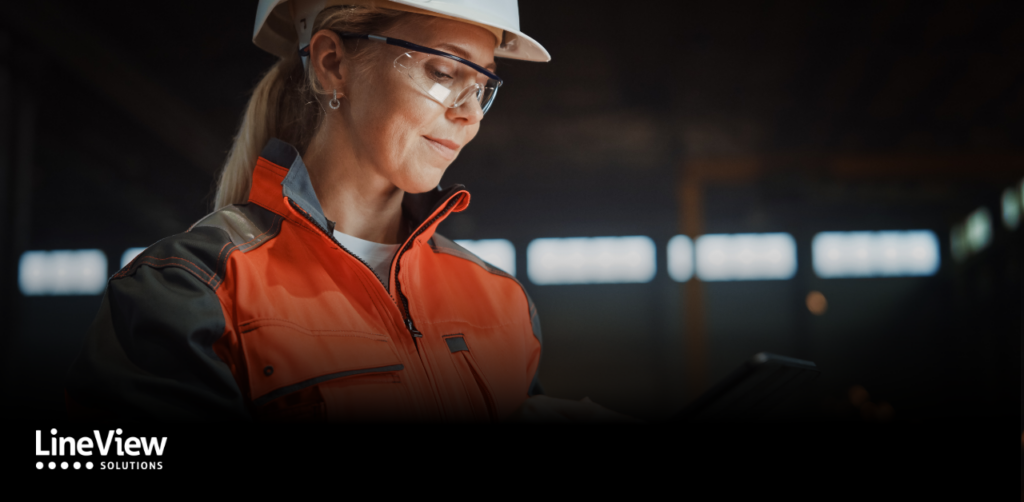We’ve all seen the stock images in magazines and adverts of the fabled ‘factory of the future’; a shiny facility that runs autonomously and where people wear VR goggles to see streams of data flying through the sky.
The evolution from OEE to Factory of the Future.
For those of us that have paved the road for this vision, we know this dream is difficult to achieve. More data doesn’t always yield more insight and data systems don’t always integrate perfectly in the real world. And while many elements of the modern factory can be automated, humans aren’t going anywhere, although the required skills for our roles are certainly changing.
The last 20 years has seen major change at factories across the world with the rise of LineView. While there is still progress to be made, we have been on a journey towards that gleaming factory of the future we’ve all imagined, and this vision is now within reach.
Allow me to start at the beginning and share not only our vision, but a realistic way to achieve it.
Driving efficiency through innovation
I started my career at Coca-Cola and have since worked alongside hundreds of operations teams in packaging and FMCG companies. My personal passion and the passion that drives LineView is the desire to help teams glean better insight from their manufacturing data, to take action, and therefore produce better results.
Our core focus at LineView has been production line monitoring and OEE (Overall equipment effectiveness). Successive iterations of our original system have helped teams find and close the gap in their performance. We drill down to actionable information, providing focus and then actions to move the needle from where the performance is, to the intended result. Our purpose-built tactical OEE software solution paired with operational excellence know-how has helped us realise an average of 7% efficiency gains for packaging operations we work with.
Innovation has come from responding to the needs of the teams we work with and doing on our part to help.
For instance, CamView has grown from a need to record machine faults in real-time so that operators can replay without standing at the line trying to catch the event or instance. DigiView was developed so that routine processes could be captured and recorded in absence of another system to do so. These tactical innovations and other digital manufacturing technologies have paved the way and opened our minds to a more strategic scope.
For example: What if a specific SKU could be produced to exact specifications at an optimal speed with every parameter optimised, from the temperature of the glue adhesive to the lubrication of the critical machine?
It’s not fiction, we have the technology and knowledge to provide this complete digital manufacturing solution today.
Making the Factory of the Future a reality
We can provide more insight by combining tactical information, both real-time and historical, that is gathered and formatted through a gateway to allow stream analytics and strategic insight from a BI (business intelligence) tool.
Artificial Intelligence and machine learning can be applied to understand the effects of various parameters, fault data, condition-based monitoring, environmental and quality data.
We’re tackling a full digital optimisation process to find correlations without data mining and analysis.
The goal is to help our customer predict failures more frequently, to predict forecasts more closely and accurately, to predict even behavioural elements like the profile of shift teams that perform best – or which changeovers can be improved.
We will continue to gather data automatically from machines to understand efficiency and causes of loss. We will continue to complement this with in-depth analysis of other tactical elements such as production line balancing, CIP monitoring and energy loss alongside compliance requirements, even maintenance and lubrication schedules.

Combining this insight through EnterpriseView, our strategic BI tool will correlate this data automatically to provide insights. Artificial Intelligence will then suggest potential actions, provide guided interventions and more insightful forecasts for better outcomes.
Of course, we won’t leave you alone in the continuation of this manufacturing improvement journey. Our operational excellence practice provides the methodologies and guidance to ensure the full suite is maximised.
Like the gains we have realised thus far as an industry, this transition won’t happen overnight or without effort – but it is realistic.
Heading into the next 20 years
A few weeks back, I found the hand-drawn ‘vision’ of the LineView system I created twenty years ago, before we ever started development of the solution. It’s colour-coded and not nearly as sophisticated as the solution you can use today.
Twenty years from now, I wonder what we will think when we look back at articles such as this, where we set out our ambitions for the next ‘Factory of the Future’.
To find out how LineView Solutions can support you and your business, please contact our team to discuss your operational needs or to schedule a solution demonstration.



